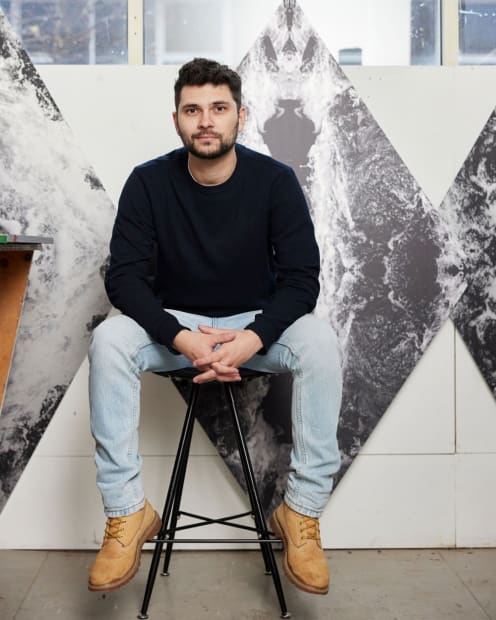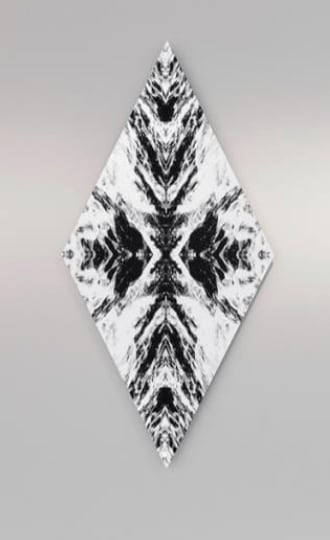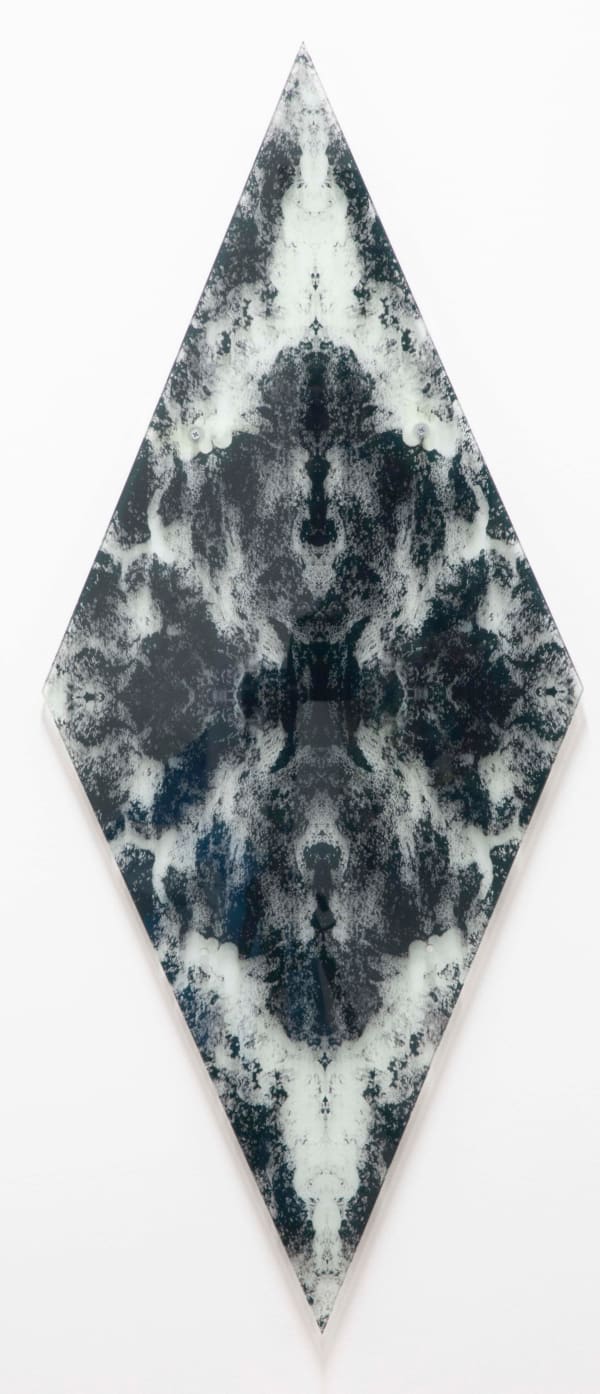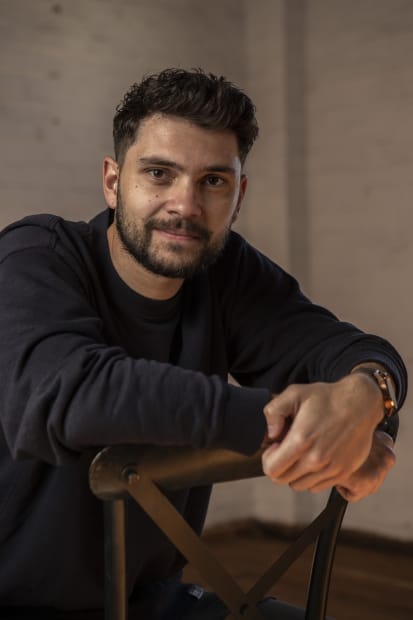-

-
 Aidan HartshornYiramir Mayiny (River People), 2024printed vinyl on aluminium200 x 100 cm (each)
Aidan HartshornYiramir Mayiny (River People), 2024printed vinyl on aluminium200 x 100 cm (each) -
-
 Aidan HartshornMadhawu Yiri (Heavy Light), 2025muriin (bark canoe) and LED rods27 x 350 x 45 cm
Aidan HartshornMadhawu Yiri (Heavy Light), 2025muriin (bark canoe) and LED rods27 x 350 x 45 cm -
-
Aidan Hartshorn: From submerged Country, shield forms float
Jonathon JonesIn winter, things move slowly in Walgalu Country. Cold temperatures sculpt age-old gums as they twist and groan around unwavering granite boulders; snow patiently melts, soaking into the sphagnum moss beds that gradually release their watery bounty throughout the year; while the critically endangered Mountain Pygmy-possum, the only marsupial to hibernate, waits for the warmth of summer to emerge. Isolated and misunderstood by many, it’s a region that looms large in Australia’s imagination, mainly thanks to Banjo Paterson’s heroic narrative The Man from Snowy River (1982). Walgalu Country is Aidan Hartshorn’s Country, which he carefully draws our attention towards.
Following World War II, Walgalu Country shuddered with the constant sound of explosions and the roar of excavators as the Snowy Mountains Hydro-Electric Scheme began construction. An epic nation-building project, it was established to supply power and water. Snowy Hydro was the foundation of many Australian high school history lessons, lauded for its ingenuity and multiculturalism. Today, it is being expanded, flogged as integral to Australia meeting its renewable energy target.
But what is often not mentioned in relation to this source of ‘green energy’ is its environmental impacts on Country and community, including the 99% reduction of water flow in the Snowy River. The river, which used to flow south-east down to the coast, is now diverted west to the Murray–Darling Basin to provide irrigation for water-hungry crops such as rice and almonds.
And while some parts of Walgalu Country are bone dry, others were inundated. Unlike the townships of Adaminaby, Jindabyne and Talbingo, which were carefully relocated and restumped to their present-day locations, safe from the floodwaters, age-old Walgalu campsites, ceremonial grounds and sacred sites were carelessly submerged.
Much of Hartshorn’s culture sits here, under the equivalent of 14 Sydney Harbours. At best, when drought hits and the dams are low, his community can scavenge at the water’s edge, like waterbirds, finding traces of their ancestors.
In Hartshorn’s work, diamond shield forms float off the wall, adorned with photographic patterns that depict the turbulent water as it discharges from Snowy Hydro dams. These images, created with refraction , echo the designs carved onto south-east shields and the fault lines now running through Country. For the artist, the patterns reference Rorschach cards, testing the viewer: a beautiful prism of babbling water, or an impediment to cultural engagement? Or something in-between, something more complex?
Snowy Hydro now generates close to half of NSW’s power needs, while the Murray–Darling Basin provides about 40% of Australia’s agricultural produce. We all rely on these yields, but must acknowledge that Walgalu Country and community have paid the price. So often in Australia’s history, the benefits that enrich the nation have left Aboriginal communities bereft, unable to access our Country and unable to practice our culture.
But does it have to be one or the other? Can we find a way to produce power and water and not continually damage Country? Aboriginal communities are asking for a seat at the table, not to unwind development but to help find sustainable solutions that benefit everyone. What a true nation-building project it would be to embrace Aboriginal values and not leave anyone behind.
-










